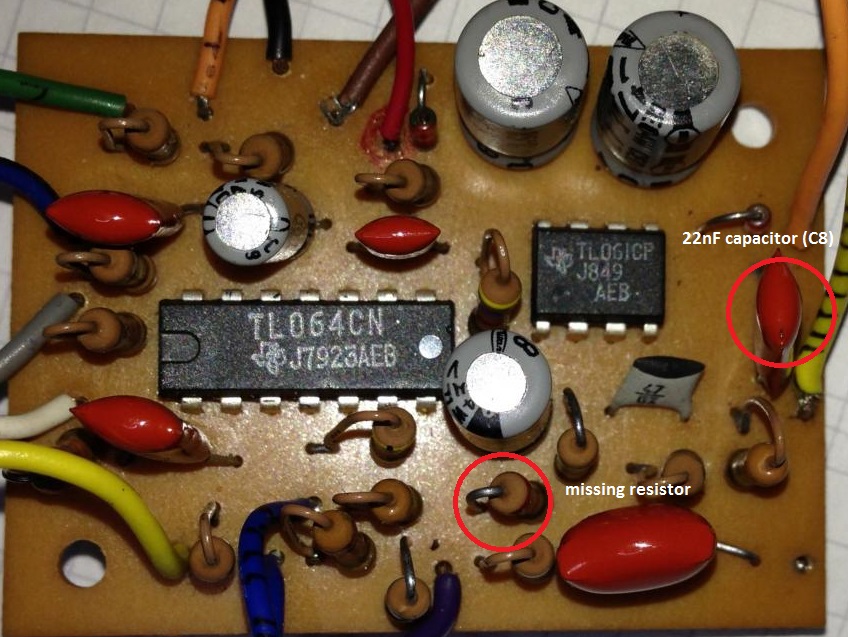The list of mistakes I found so far on the schematic:
- IC1C is actually IC1D and IC1D is IC1C,
- C8 capacitor is rather 22n and not 22uF,
- there is one missing resistor on the schematic. It is marked with red circle on the photo below. It goes from C5 (after the input buffer) to pin #6 of IC1B. I'd like to know its value. What is funny is that dwmorrin has it on his quick sketch :-).

Mark
- IC1C is actually IC1D and IC1D is IC1C,
- C8 capacitor is rather 22n and not 22uF,
- there is one missing resistor on the schematic. It is marked with red circle on the photo below. It goes from C5 (after the input buffer) to pin #6 of IC1B. I'd like to know its value. What is funny is that dwmorrin has it on his quick sketch :-).
Mark
Comment